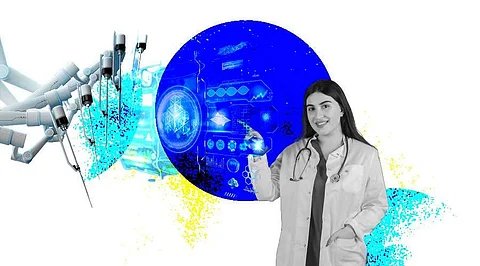

Automation has permeated almost every sector over the years. Automation was often associated with factory machines accelerating assembly line output. But automation has gone a long way since then. Healthcare automation is transforming the sector while saving lives. In many healthcare settings, automated methods are employed to guarantee better patient results and a better patient experience. Healthcare technology has improved consistency and quality of treatment, reduced inaccuracies and human mistakes, and increased creativity through data-driven insights.
Appointment cancellations are a burden for any healthcare professional. Previously, calling patients to remind them of scheduled appointments helped guarantee they remembered them—or got them to cancel. Lack of time to reach patients, current patient information, and effective communication methods are common problems for medical offices. Notifications of patient appointments are one advantage of automation in healthcare. Automated alerts effectively prompt patients to cancel appointments if they can't make them or need to change them, remind patients of forthcoming meetings, and verify that information is current.
Medical clinic staff personnel must check if doctors are available, records are current, and any other necessary information is accessible before they may schedule patients. Automated healthcare solutions can streamline and enhance that procedure, allowing clinic employees to concentrate on other crucial duties. Patients may now check in via automated healthcare systems in addition to making appointments, which further frees up staff time while reducing wait times and boosting productivity.
Not every healthcare facility needs to be manned at all times. There are busy moments when a hospital or office requires every employee on hand and slower times when just a few staff members are needed. Health organizations may be able to comprehend better swings in patient numbers and when more or fewer staff members are required by implementing automation in hospitals and medical clinics. Shortening wait times not only improves the patient experience but also minimizes staff burnout and saves money by only paying for workers when they are needed.
Patients are frequently left alone to remember and adhere to the instructions once released. Medical professionals may follow up with their patients and remind them of crucial instructions to follow or impending visits and tests, thanks to automation in healthcare. Additionally, patients may easily confirm their orders without calling the office and taking up staff time, and they can let their doctor know if they need assistance.
Automation is not susceptible to human mistakes, exhaustion, or other distractions. It implies that technology can offer improved consistency and quality of care, lowering the possibility of human error with disastrous results. Error reduction enhances healthcare outcomes as well as patient experiences. Patients frequently have medical problems requiring a team of doctors and providers operating out of several facilities. With healthcare technology, those professionals can communicate effectively and exchange information, ensuring all team members can access up-to-date patient data.
Join our WhatsApp Channel to get the latest news, exclusives and videos on WhatsApp
_____________
Disclaimer: Analytics Insight does not provide financial advice or guidance. Also note that the cryptocurrencies mentioned/listed on the website could potentially be scams, i.e. designed to induce you to invest financial resources that may be lost forever and not be recoverable once investments are made. You are responsible for conducting your own research (DYOR) before making any investments. Read more here.
